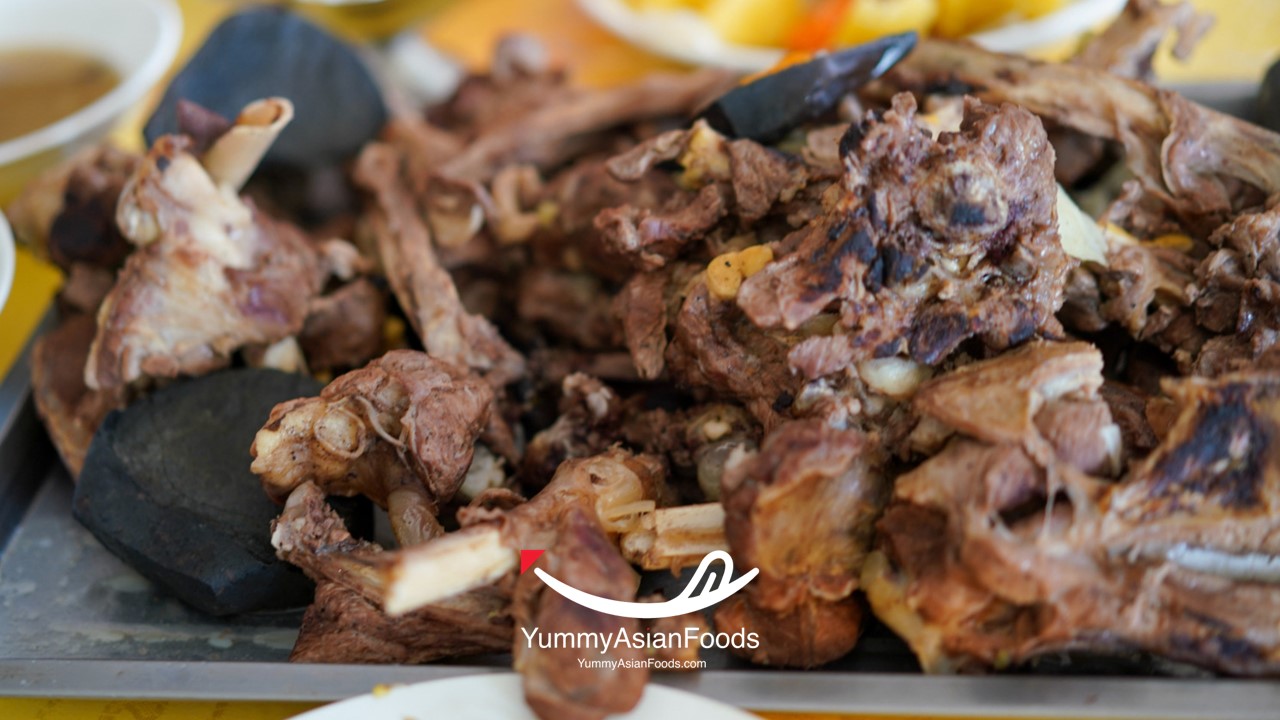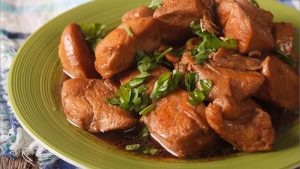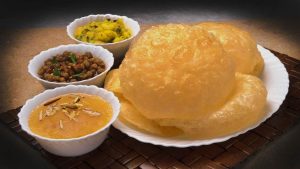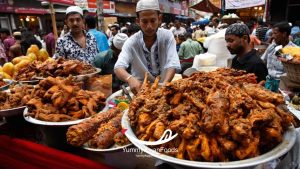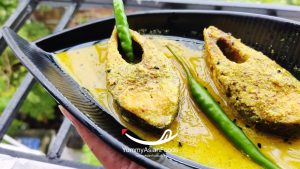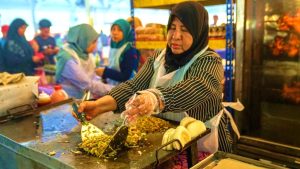Table of Contents
ToggleMongolian cuisine holds a significant place within the country’s culture, reflecting its nomadic history and reliance on hearty, filling dishes. Traditional Mongolian dishes are known for their rich flavors and use of locally sourced ingredients, making them a vital part of the country’s culinary heritage. The popularity of Mongolian dish recipes is evident in the way it brings people together, whether it’s for family gatherings, celebrations, or everyday meals. The unique flavors and cooking techniques of authentic Mongolian food have garnered attention worldwide, drawing in food enthusiasts looking to experience the taste of Mongolia.
If you’re keen to explore the world of traditional Mongolian cuisine, you’ll find that Mongolian cuisine offers a diverse range of flavors and textures that are sure to tantalize your taste buds. From hearty meat-based stews to dairy-centric dishes and flavorful noodles, popular Mongolian recipes showcase the country’s culinary prowess and deep-rooted traditions. Whether you’re seeking to recreate authentic Mongolian food in your own kitchen or planning to visit Mongolia to savor these dishes firsthand, the variety and richness of Mongolian dishes are not to be missed.
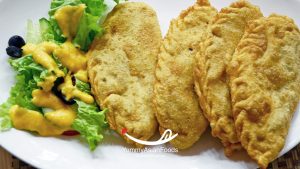
Mongolian Dish Recipes: A Culinary Exploration
Mongolian cuisine holds a deep cultural and historical significance, reflecting the nomadic lifestyle and harsh climate of the region. Traditional Mongolian foods are a testament to the resourcefulness of the people, as they often utilize ingredients readily available in the harsh Mongolian landscape. The preparation of Mongolian cuisine is a reflection of the nomadic lifestyle, with methods such as cooking over an open flame or using hot stones to simmer stews. The communal aspect of enjoying Mongolian dish delights also plays a crucial role in the culture, as meals are often shared among family and friends, fostering a sense of unity and togetherness.
Local ingredients play a pivotal role in creating authentic Mongolian cuisine, with staples such as meat, dairy, and grains forming the foundation of many recipes. The use of local produce not only adds a distinct flavor to Mongolian treats but also speaks to the sustainability of the cuisine, as ingredients are sourced from the immediate surroundings. Traditional cooking methods further enhance the flavors of Mongolian dishes, with techniques such as slow-roasting, steaming, and stir-frying being prevalent. By incorporating local ingredients and traditional cooking methods, Mongolian cuisine preserves its rich heritage and offers a glimpse into the culinary traditions of the region.
1: Buuz (Mongolian Dumplings)
In Mongolia, Buuz is a traditional Mongolian dish of significant cultural importance. These steamed dumplings are typically filled with minced meat, such as beef or mutton, onions, and various spices, then enclosed in a thin dough wrapper. The dish is often prepared during special occasions and festivals, symbolizing prosperity and abundance. To make authentic Buuz, prepare the filling with finely minced meat, onions, and seasoning. The dough is then rolled out and cut into circles, filled with the meat mixture, and carefully pleated to seal the dumplings. Finally, the Buuz are steamed until the dough becomes tender and the flavorful filling is cooked to perfection.
Buuz, a beloved Mongolian dish, is enjoyed in various forms nationwide. While the classic recipe features a meat-based filling, there are regional variations that incorporate ingredients like cabbage or potatoes for a unique twist. In some areas, Buuz may be flavored with local spices or herbs, adding a distinct regional flair to the dish. Whether enjoyed as a casual street food or as part of a festive feast, Buuz remains a cherished part of Mongolian cuisine, reflecting the rich culinary heritage of the region.
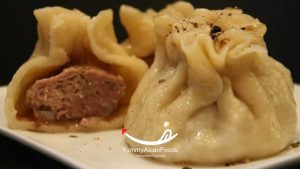
2: Khorkhog (Mongolian Barbecue)
Khorkhog, a traditional Mongolian dish, holds a special place in Mongolian nomadic culture. This unique barbecue dish is prepared by cooking meat, usually mutton, with vegetables and flavorful spices in a special way. The preparation process involves placing the meat and vegetables in a large metal container along with hot stones. The container is then sealed and cooked over an open fire, allowing the hot stones to create a steamy, pressure-cooked environment that infuses the meat and vegetables with rich, smoky flavors. This distinctive cooking style results in tender, succulent meat and perfectly cooked vegetables, making Khorkhog a beloved and essential part of Mongolian cuisine.
The significance of Khorkhog in Mongolian nomadic culture goes beyond its delicious flavors. This iconic Mongolian dish is often prepared during special occasions and celebrations, symbolizing warmth, hospitality, and togetherness within the community. The communal act of preparing and enjoying Khorkhog reinforces the strong bonds and traditions of the nomadic lifestyle, as families and friends gather around the sizzling dish to share stories and experiences. The slow, patient cooking process mirrors the pace of the nomadic lifestyle, creating a sense of connection to the land and its resources. With its unique cooking style and cultural significance, Khorkhog remains a cherished symbol of Mongolian heritage and a delicious representation of the country’s culinary traditions.

3: Tsuivan (Mongolian Noodle Dish)
Tsuivan, a beloved Mongolian dish, is a traditional noodle dish that highlights local ingredients and cooking techniques. The dish typically consists of hand-pulled noodles, meat (often mutton), onions, and various vegetables, such as carrots and bell peppers. The key to a flavorful Tsuivan lies in the use of locally sourced ingredients, such as the tender mutton that is commonly found in the Mongolian countryside. The cooking technique involves stir-frying the ingredients in a large, flat-bottomed pan over an open flame, imparting a delightful smoky flavor to the dish. This method of preparation not only infuses the Tsuivan with a unique taste but also reflects the nomadic lifestyle and culinary traditions of the Mongolian people.
Across different regions of Mongolia, variations of Tsuivan can be found, each with its unique twist. In some areas, the dish may feature different types of meat, such as beef or goat, depending on the local agricultural practices. Additionally, the choice of vegetables and seasonings can vary, showcasing the diverse culinary influences within Mongolia. Tsuivan holds cultural significance as a staple dish in Mongolian cuisine, often served during celebrations and gatherings, symbolizing unity and togetherness. Its hearty and nourishing nature also makes it an essential part of the Mongolian diet, providing sustenance to nomadic herders and city dwellers alike.
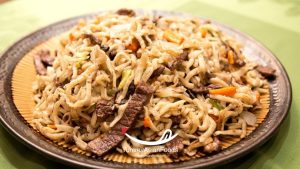
4: Khuushuur (Mongolian Fried Pastry)
Khuushuur, a popular Mongolian dish, is a delightful fried pastry renowned for its crispy texture and savory filling. To make Khuushuur, start by preparing the dough using flour, water, and salt. The dough is then rolled out and cut into circles, which are filled with a mixture of ground meat, onions, and various spices. The filled circles are folded over and crimped to seal the edges, creating a half-moon shape. Finally, the pastries are deep-fried until golden brown, resulting in a delectably crispy exterior that contrasts beautifully with the flavorful filling. The combination of the crunchy texture and rich, savory flavors makes Khuushuur a beloved Mongolian dish enjoyed by locals and visitors alike.
In Mongolian festivals and celebrations, Khuushuur plays a significant role as a traditional delicacy that symbolizes the spirit of togetherness and joy. During Naadam, the most prominent national holiday in Mongolia, Khuushuur is often prepared in large quantities and shared among friends and family members as a symbol of unity and abundance. Its presence at these gatherings reflects the cultural significance of this beloved Mongolian dish, which has been cherished for generations as a symbol of community and celebration. Whether enjoyed at festive occasions or as a casual snack, Khuushuur continues to hold a special place in the hearts of Mongolians, embodying the spirit of tradition and conviviality.

5: Boortsog (Mongolian Fried Cookies)
Boortsog, a beloved Mongolian dish, is a delightful sweet treat that holds significant cultural symbolism in Mongolian cuisine. To make Boortsog, start by combining flour, sugar, baking powder, salt, and butter to form a dough. After letting the dough rest, roll it out and cut it into small pieces, shaping them into intricate designs before frying until golden brown. The result is a crispy, sweet cookie that is perfect for enjoying with a cup of tea or milk. In Mongolian culture, Boortsog is often served during festive occasions such as Tsagaan Sar (Lunar New Year) and weddings, symbolizing prosperity and good fortune for the coming year.
This traditional Mongolian dish comes in various regional variations, with some recipes incorporating ingredients like milk, yogurt, or even adding a hint of cardamom or nutmeg for extra flavor. Boortsog is not only enjoyed for its delectable taste, but it also holds symbolic importance in Mongolian culture, representing hospitality and warmth. Whether it’s a family gathering or a community celebration, Boortsog remains a cherished and iconic part of Mongolian culinary traditions, bringing people together to savor its sweet, crispy goodness.

6: Bansh (Mongolian Dumplings)
Bansh, a traditional Mongolian dish, is a beloved delicacy known for its delicate wrapping and flavorful filling. To make these delectable dumplings, start by preparing the dough, which consists of flour, water, and a pinch of salt. Once the dough is ready, it is rolled out and cut into small circles. The filling, typically made with minced meat, onions, and seasonings, is then carefully placed in the center of each circle before being sealed into a distinct half-moon shape. This meticulous process results in Bansh’s signature tender and chewy texture, making it a favorite among locals and visitors alike.
In Mongolian culture, bansh holds significant importance and is often served during special gatherings and rituals. Whether it’s a family celebration or a community event, bansh is a staple dish that brings people together. The preparation and consumption of bansh are deeply rooted in tradition, symbolizing unity and togetherness. As friends and family gather around the table to enjoy these delectable dumplings, they share not only a delicious meal but also cherished moments and memories, making Bansh an integral part of Mongolian culinary heritage.
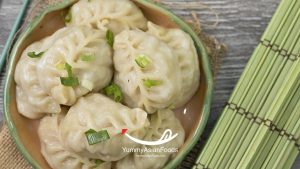
7: Boodog (Mongolian Roast Meat)
Boodog, a traditional Mongolian dish, is a flavorful roast meat that is prepared using a unique cooking method that involves hot stones. To make Boodog, a whole goat or marmot is stuffed with hot stones, vegetables, and seasonings, and then the animal is sewn back up and cooked over an open fire. The hot stones inside the animal help to evenly roast the meat from the inside out, resulting in tender and succulent flavors that are truly unique to this Mongolian food.
The communal aspect of preparing and enjoying Boodog in Mongolian gatherings is an integral part of the experience. In many Mongolian communities, the preparation of boodog is a collaborative effort where family and friends come together to assist in the cooking process. As the meat slowly roasts over the open fire, the aroma of the cooking Boodog fills the air, creating an atmosphere of anticipation and togetherness. Once the boodog is ready, it is enjoyed by all, with everyone coming together to savor the rich and savory flavors of this beloved Mongolian dish.
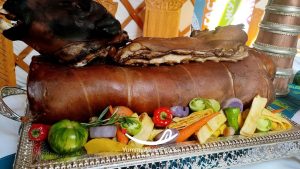
8: Tsagaan Idee (Mongolian Milk Tea)
Tsagaan Idee Mongolian Milk Tea, a popular Mongolian recipe, plays an integral role in traditional Mongolian cuisine. This authentic Mongolian food is known for its unique blend of tea, milk, and salt. The process of making Tsagaan Idee involves simmering the mixture over low heat, creating a rich and creamy beverage that is enjoyed by locals and visitors alike. The preparation and consumption of this Mongolian milk tea often bring people together, showcasing the communal aspect of enjoying traditional Mongolian cuisine. Whether you’re exploring Mongolia or seeking to recreate authentic Mongolian food at home, Tsagaan Idee Mongolian Milk Tea offers a delightful glimpse into the country’s culinary traditions.
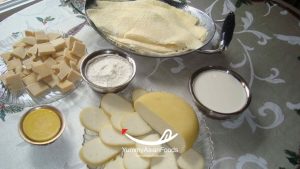
Final Bite: 8 Mongolian Dish Delights You Must Try Now
After exploring the rich and diverse culinary traditions of Mongolia, it’s clear that Mongolian dishes offer a delightful array of flavors and textures. From hearty meat-based stews to savory dumplings and refreshing dairy-based treats, Mongolian cuisine truly showcases the country’s rich cultural heritage. Whether you’re a fan of bold, spicy flavors or prefer more subtle, delicate tastes, there’s a Mongolian food waiting to delight your taste buds. So, if you’re ready to embark on a delicious culinary adventure, be sure to savor the tantalizing array of Mongolian dish delights that await you.


